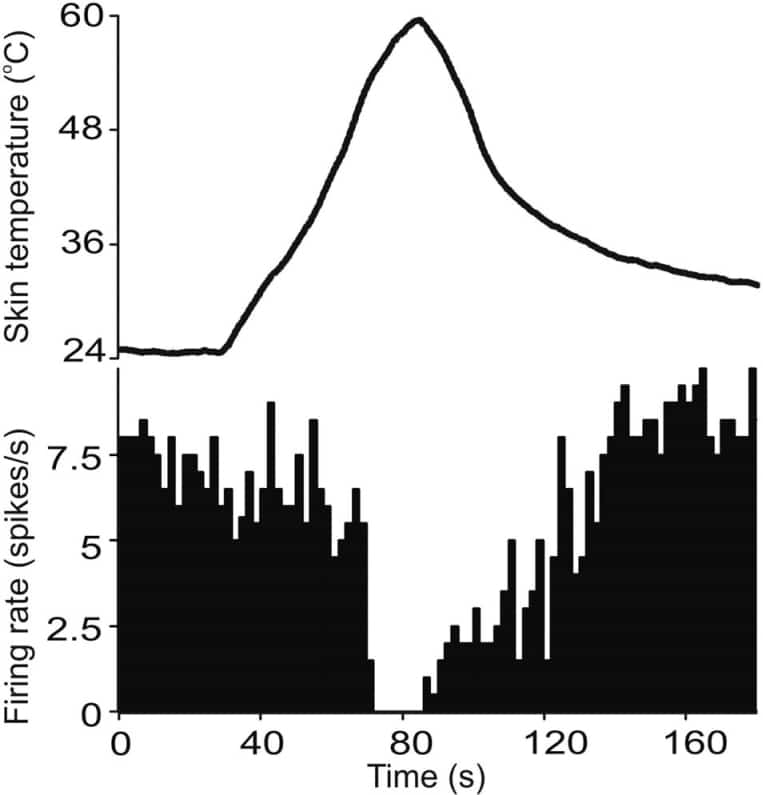Golgi cells are large granular layer interneurones in the cerebellar cortex which exert feedback inhibitory control over granule cells, thus controlling information flow through the parallel fibre system. We recently reported that the spike activity of Golgi cells, but not Purkinje cells, is depressed by stimulation of peripheral afferents (Holtzman et al. 2003). These responses are evoked by low threshold cutaneous afferents and higher threshold muscle and cutaneous afferents from a wide receptive field (Phuah & Edgley, 2004). Evidence from spinal lesion experiments indicates that the ascending pathway is crossed and ascends in the ventral part of the lateral funiculus, which raises the possibility that the responses are mediated by the anterolateral system. If so, noxious stimulation should generate similar responses. Experiments were performed in rats under urethane anaesthesia (i.p. 1.2-1.5g/kg) which were killed at the end of the experiment with an opverdose. We used high-intensity radiant heat to selectively activate cutaneous nociceptors, but not mechanoreceptors, in the hindfoot pads. Skin surface temperature was estimated with a small k-type thermocouple placed on the skin. Extracellular single unit recordings were made from Golgi cells in the posterior lobe. The firing rate of all (16/16) of the Golgi cells tested was depressed when skin temperature was raised to 50-55°C (see figure). The onset of the response occurred at a mean temperature of 49.5°C SEM ±1°C), but there was no change at temperatures below 40°C. The response thus correlates with the threshold for nociceptor activation (Liu et al., 2003).Our results show that activation of thermal nociceptors reduces Golgi cell firing, consistent with the responses being mediated by the anterolateral system. This suggests that general arousal resulting from noxious stimulation is accompanied by a widespread disinhibition of transmission through the granule cell-parallel fibre-Purkinje cell system. Recent PET and fMRI studies in humans have implicated the cerebellum in various aspects of pain and nociception (Dimitrova et al., 2003). These metabolic changes could be the consequences of changes in cerebellar information flow mediated by Golgi cells.
University of Glasgow (2004) J Physiol 557P, C97
Communications: Thermal noxious input causes a widespread depression of cerebellar Golgi cell firing.
H.J. Room, T. Holtzman and S.A. Edgley
Department of Anatomy, University of Cambridge, Cambridge, UK
View other abstracts by:
Where applicable, experiments conform with Society ethical requirements.

